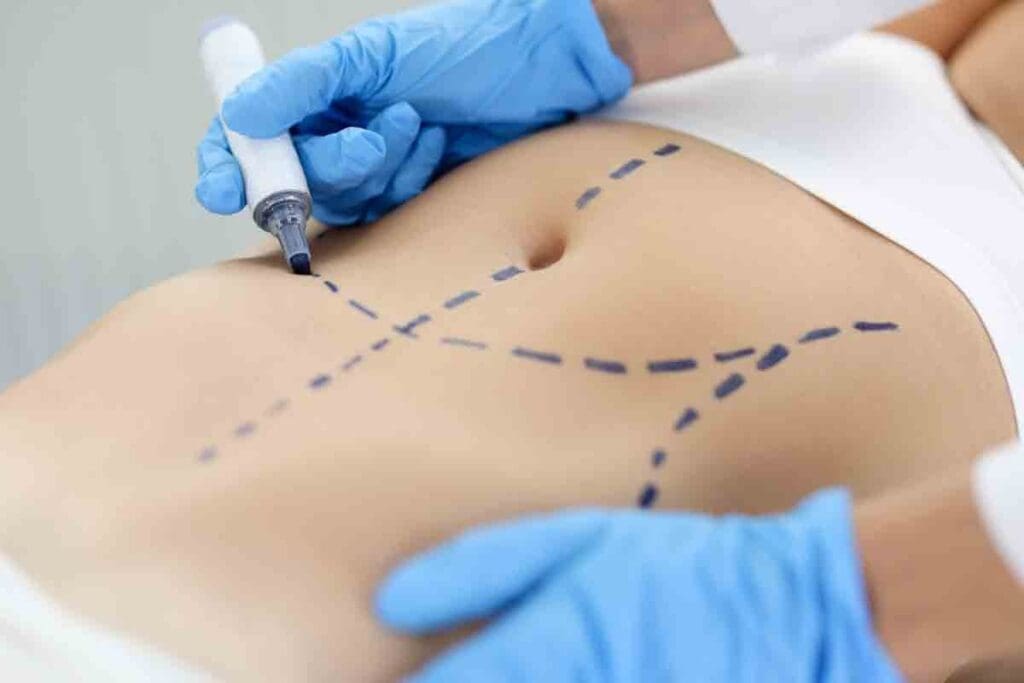Last Updated on November 26, 2025 by Bilal Hasdemir

Recovering from abdominal surgery is a journey that needs patience, expert advice, and care for the patient. The recovery time changes a lot based on the surgery type, patient health, and after-care.How long does it take to heal from abdominal surgery? We break down the true recovery times and key expectations for a safe healing process.
Patients usually recover slowly over weeks to months. Liv Hospital’s high standards and focus on patients ensure top care and the latest recovery plans.
It’s important to understand the recovery after abdominal surgery to manage hopes and plan for getting better. The surgery’s complexity and the patient’s health play big roles in how fast they recover.

Knowing how to recover after abdominal surgery is key for patients. The recovery process has many stages, from right after surgery to long-term healing.
The healing process after surgery can be broken down into stages. Immediate recovery is the first phase, where doctors watch for any issues. Then comes the short-term recovery phase, where patients start to get stronger and move better.
Healing isn’t just about the body; it’s also about the mind and emotions. Patients might feel many emotions, like anxiety or relief, as they heal.
| Stage | Timeline | Key Focus |
| Immediate Recovery | 0-1 week | Monitoring for complications, pain management |
| Short-term Recovery | 1-6 weeks | Regaining strength, mobility, and returning to daily activities |
| Long-term Healing | 2-12 months | Complete physical recovery, emotional healing, and returning to pre-surgery lifestyle |
It’s important to know the difference between recovery and complete healing. Recovery is the first period after surgery where patients get back to basic functions. Complete healing means fully getting back to physical strength, emotional health, and pre-surgery activities.
Complete healing takes longer and depends on age, health, and surgery complexity.
Having realistic expectations is key to a smooth recovery. Patients should know that healing time varies based on the surgery and individual factors.
Factors like age, health, pre-existing conditions, surgery complexity, and post-operative care affect recovery. Understanding these can help patients prepare better for their recovery.

Knowing the recovery times for abdominal surgery helps patients understand what to expect. The recovery is divided into three main parts: right after surgery, a few weeks later, and the long-term healing. Each part has its own challenges and milestones.
The first week after surgery is all about watching for any issues and managing pain. Most modern anesthetics don’t cause long-lasting side effects, usually lasting only a day or so after surgery. Doctors often tell patients to rest and avoid hard activities during this time.
A medical expert notes,
“The first week after abdominal surgery is critical for setting the stage for a smooth recovery. Patients should follow their doctor’s instructions carefully to minimize the risk of complications.”
The short-term recovery, lasting 2 to 6 weeks, is when patients start getting back to normal. Laparoscopic surgery patients might get back to daily life in 1 to 2 weeks, while open surgery recovery takes 2 to 6 weeks. Even though some pain and tiredness may remain, most people see a big improvement.
Long-term healing can take months, with some limitations lasting longer. The recovery time can be from 2 to 12 months, based on the surgery’s complexity and individual factors. It’s important to be patient and follow your doctor’s advice for the best healing.
As recovery goes on, patients will get stronger and can return to their usual lives. It’s key to eat well, drink plenty of water, and follow post-surgery care to help heal.
Knowing how long it takes to recover from different abdominal surgeries is key. The time needed to heal varies a lot, depending on the surgery type. Each surgical method affects how long and how hard the recovery will be.
Laparoscopic surgery is less invasive, leading to quicker healing. People usually get back to their normal life in 1 to 2 weeks. This is because of the smaller cuts and less damage to the body compared to open surgery.
Key benefits of laparoscopic surgery recovery include:
Open abdominal surgery takes longer to recover from, usually 2 to 6 weeks. The surgery’s complexity and the patient’s health are big factors in recovery time.
Factors influencing open abdominal surgery recovery:
| Surgery Type | Typical Recovery Time | Hospital Stay |
| Laparoscopic Surgery | 1-2 weeks | 1-3 days |
| Open Abdominal Surgery | 2-6 weeks | 3-7 days |
Complex surgeries, like those needing multiple organ repairs, take longer to recover from. Recovery times can be several months to over a year.
Those with complex surgeries face a longer, tougher recovery. They need more care after surgery and may need to rehabilitate for a longer time.
Considerations for complex abdominal surgery recovery:
Knowing what affects how long it takes to heal after abdominal surgery is key. The healing process is complex. It can be influenced by many things.
Age and health are big factors in how fast you heal. Older people or those with health issues might take longer. This is because they might not have as much energy or a strong immune system.
Conditions like diabetes or heart disease can make healing harder. They can affect how well your body heals and responds to surgery.
The type of surgery and the method used can also affect healing time. More complex surgeries or open surgeries might take longer to recover from. This is compared to less invasive laparoscopic surgeries.
Following post-operative care instructions is very important. This includes taking your medicine, going to follow-up appointments, and not overdoing it with activities.
| Factor | Influence on Healing Time | Recommendations for Optimal Recovery |
| Age and Overall Health | Older patients or those with poor health may take longer to recover. | Pre-surgery health optimization, careful post-operative monitoring. |
| Pre-existing Conditions | Conditions like diabetes can slow healing. | Manage conditions before surgery, close post-operative care. |
| Surgical Complexity | More complex surgeries generally require longer recovery times. | Discuss surgical options with your doctor, plan for recovery time. |
| Post-Operative Care | Non-compliance can lead to complications and prolonged recovery. | Follow post-operative instructions carefully, and attend follow-up appointments. |
By understanding these factors and taking proactive steps, patients can optimize their recovery process and minimize possible complications.
Recovering from abdominal surgery needs good pain management and physical therapy. Managing pain well lets patients do daily tasks, go to physical therapy, and get stronger. This is key to getting back to normal.
Pain levels change over time, getting better in a few weeks. At first, doctors use medicine to control pain. As patients get better, they need less medicine.
Healthcare experts say, “Pain is what the patient says it is.” This shows pain is personal and needs a plan that fits each person.
Patients might feel different kinds of pain, like pain from cuts, internal pain, and muscle pain from surgery. Knowing these types helps doctors make a better pain plan.
Doctors have plans for pain medicine after surgery. They often use medicines with codeine or dihydrocodeine. But these can make people feel tired, sick to their stomach, and constipated.
It’s important for patients to stick to their pain medicine plan. They should talk to their doctor if they have side effects. Doctors can change the plan to help with pain without too many side effects.
Physical therapy is key after surgery. It helps patients get strong, move better, and stretch more. The therapy is made just for each person, based on their surgery and health.
Getting up and moving early is good. It helps avoid blood clots and helps with healing. Physical therapists help make a plan of exercises that get harder as patients get better.
Getting the core muscles strong is important after surgery. Patients start with easy exercises and do more as they get stronger. This helps the spine, improves posture, and lowers back pain.
Patients start with simple moves like deep breathing, tilting the pelvis, and gentle stomach contractions. As they get better, they do harder exercises. Always with a doctor or a physical therapist’s help.
Nutrition and lifestyle changes are key to recovering well after abdominal surgery. Eating right and living healthy can speed up healing. It affects how fast and well you recover.
Eating a balanced diet is essential for healing after surgery. Include fruits, veggies, lean proteins, and whole grains in your meals. Avoid foods that can make you feel worse, like processed and sugary ones.
Drinking enough water is also vital. It keeps your body working right and helps with healing. Drink at least eight glasses of water a day, as your doctor suggests.
Enough sleep and rest are important for healing. Rest helps your body focus on getting better. Try to sleep 7-9 hours each night and take breaks during the day to rest.
Recovering well also means taking care of your mind. Stay positive and manage stress to help your recovery. Do things that make you feel good, like meditating, reading, or spending time with family.
Knowing when and how to get back to normal is key to a good recovery after abdominal surgery. Patients slowly start doing their daily tasks again. But, they must follow their doctor’s advice closely.
First, patients do simple things like bathing and light housekeeping. These tasks should be done slowly so as not to hurt the stomach muscles. Gentle exercise is also good, as doctors suggest, to help with healing.
When to go back to work depends on the job and how fast you heal. Usually, it’s 6 to 8 weeks after surgery. But jobs that are hard on the body might need more time or changes to avoid hurting the stomach.
Starting to exercise is important, but do it slowly. At first, avoid hard work and lifting heavy things. As you get better, you can do more. Always follow your doctor’s advice for a smooth recovery.
Getting back to your old life, including more exercise, takes a few months. It’s important to listen to your body and not rush. This way, you can avoid problems and have a better outcome.
Recovery times after abdominal surgery vary based on the organ involved. Each organ has its own healing pace. Knowing these differences helps patients prepare for their recovery.
Surgeries on the stomach, like gastrectomy or gastric bypass, need a lot of time to heal. Patients usually need 4 to 6 weeks to get back to normal. But full recovery can take up to 3 months.
Intestinal surgeries, like resections or repairs, have different recovery times. Generally, it takes 6 to 8 weeks to recover. Some cases might need longer.
Surgeries on the liver or gallbladder, like cholecystectomy or liver resection, have specific recovery times. Laparoscopic procedures usually take 1 to 2 weeks to recover. Open surgeries might need 4 to 6 weeks or more.
Gynecological surgeries, such as hysterectomies or ovarian surgeries, have varying recovery times. Recovery usually ranges from 4 to 12 weeks, depending on the procedure’s complexity and method.
The recovery times for different organ-specific surgeries are summarized in the following table:
| Surgery Type | Typical Recovery Time | Full Recovery Time |
| Stomach Surgery | 4-6 weeks | Up to 3 months |
| Intestinal Surgery | 6-8 weeks | Varies |
| Liver/Gallbladder Surgery (Laparoscopic) | 1-2 weeks | 4-6 weeks |
| Gynecological Surgery | 4-12 weeks | Varies |
Knowing the specific recovery times for each organ helps patients plan better. It makes the recovery process smoother.
Patients need to understand what to expect after abdominal surgery. Knowing what to expect helps prepare them for the recovery. The recovery time can vary based on the surgery type, health, and care after surgery.
Talking openly with doctors is key to handling any concerns or symptoms during recovery. Patients should share their recovery goals and any factors that might affect their healing. This helps make the recovery smoother and gets them back to normal life faster.
Being well-informed and prepared is essential for a confident recovery from abdominal surgery. Realistic expectations are critical for a successful recovery. Working closely with healthcare professionals is the best way to achieve a good outcome.
Recovery time from abdominal surgery depends on the surgery type, patient health, and care after surgery. Patients usually recover slowly over weeks to months.
Age, health, surgery complexity, and following care instructions are key factors. They all affect how long it takes to heal.
Laparoscopic surgery has a quicker recovery. Patients can get back to daily activities in 1 to 2 weeks.
Open abdominal surgery needs a longer recovery. It can take 2 to 6 weeks, depending on the surgery and the patient’s health.
Managing pain is key during recovery. Doctors use medication and physical therapy to help patients regain strength and mobility.
Eating a balanced diet rich in nutrients helps healing. Drinking enough water is also important for health.
Returning to normal activities varies by individual and surgery complexity. Patients should avoid hard activities first and then gradually increase activity.
Yes, different surgeries have unique recovery needs. This includes stomach, intestinal, liver, or gallbladder procedures.
Healing time for internal organs varies. But it usually takes several months for full healing.
Physical therapy is vital in recovery. It helps patients regain strength and mobility.
Good mental health is essential during recovery. The mind’s well-being greatly affects overall health.
Yes, pre-existing conditions can affect recovery time. Patients with these conditions may need longer to heal.
Returning to work varies by individual and surgery complexity. It also depends on the job’s physical demands.
Subscribe to our e-newsletter to stay informed about the latest innovations in the world of health and exclusive offers!